7 Major Ports In Zambia
Located in Central and Southern Africa, the Republic of Zambia is a landlocked nation bordered by Congo, Botswana, Namibia, Angola etc. The country houses 15.9 million people belonging to different ethnic and religious communities. It is abundant in natural resources such as minerals, forestry, freshwater and cultivable land.
The Zambian economy has always depended on copper mining and agriculture. However, the lack of foreign investments and decreasing copper prices in the late 1990s led to widespread poverty and rampant corruption in the public sector. Many industries were hastily privatised, a disastrous measure which was realised later. Today, Zambia faces underemployment in urban areas and disguised unemployment in rural areas.
However, from 2007 onwards, the country’s economy witnessed some growth due to diversification efforts by shifting focus to the promotion of travel and tourism, hydropower and agricultural reforms. Hence the World Bank categorised Zambia as one of the fastest-growing economies in Africa even though almost 60 per cent of its population lives in extreme poverty. According to the Global Competitive Index, Zambia is ranked as the 8th most competitive nation in the African Continent and 4th in terms of ease of business.
Zambia recorded appreciable social and economic development, a result of efficient policies implemented in the transportation sector, gradually transforming Zambia from a landlocked to a land-linked country by carving out new import and export trade routes. These routes, designed by Regional Economic Communities, connect Zambia with South Africa Development Community seaports.
It has a tropical climate and various topographical features, including plateaus, hills, mountains and river valleys. It has no seaports but a major port on Lake Tanganyika and minor facilities enabling inter-regional trade. The international maritime business is conducted via the ports of Durban in South Africa, Dar es Salaam in Tanzania and Walvis Bay Port in Namibia.
Developing Special Economic Zones and dry ports near the Zambian border can transform it into a regional intermodal hub bringing substantial economic benefits. However, the government currently lacks sufficient funds and faces high transportation costs, negatively affecting its competitiveness in the national and global trade markets.
Nonetheless, the country is a crucial exporter of copper and copper products like coils, wires, sugar, tobacco, gemstones and cotton. It imports crude and refined petroleum, fertilisers, chemicals etc. Major trade partners comprise Switzerland, China, Singapore, UAE, India, and Africa. In this article, let us look at the seven inland ports of Zambia.
1. Port of Mpulungu
Mpulungu Harbour is the main inland port of Zambia, located on the shores of Lake Tanganyika in the northern province. The only water-based Port is operated by the Mpulungu Harbour Corporation Limited, which is planning to renovate and expand the facility. According to the latest press release, the proposed plan would increase its cargo handling capacity from 200,100 metric tonnes to 800,000 tonnes and passenger capacity from 25,000 to 2,30,000 by the end of this decade.
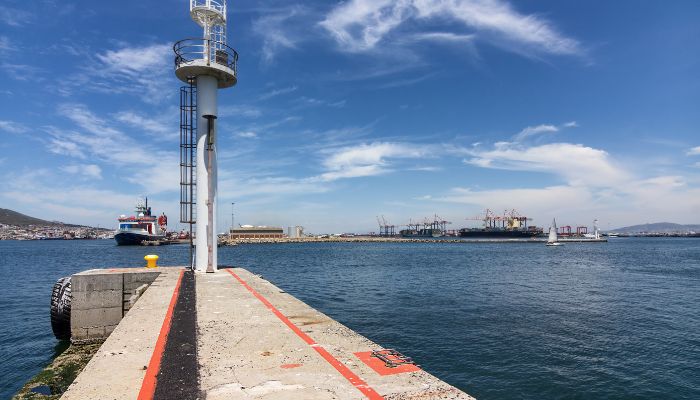
Port History
The Port was built in 1929 before the country gained independence from the British. It was a fishing harbour. However, post-independence, it was mainly utilised as a storage facility for fuel shipped from the East African region and destined for North Zambia. In 1977, the Port started handling exports to the Great Lakes region and emerged as a principal waterway.
Today, Mpulungu port is easily accessible by roads and handles cargo destined for Tanzania, Burundi and the Democratic Republic Of Congo nations.
Port Characteristics
It is primarily an export facility handling cement, grains and sugar. It has two conventional berths spanning 125 m capable of docking two vessels on either side. Port equipment includes three mobile harbour cranes with a 20-tonne lifting capacity, 3 five million-tonne capacity forklifts and a container lift for handling 20 feet containers. However, the latter is not used as the Port handles only breakbulk.
Storage facilities
The Port has ample storage space; however, it does not have a container freight station or cold storage. Storage areas for break bulk and bagged commodities are available in 5 warehouses covering 10,000 m2. It has two small sheds storing 5000 tonnes of grains and cereals; however, they are old and need repairs. Two open storage yards are being constructed outside the premises. The port harbour offers 14 days free storage as part of its policy.
2. Tazara Dry Port
Opened in 2018, this dry Port is located behind the New Kapiri Mposhi Railway Station and is operated by the Central African Corridor Company Limited. Known as the Tanzania -Zambia Railway Authority Dry port, it is a major logistics centre for the eastern and central trade corridors. Its strategic location enables the direct transfer of cargoes to and from the seaport of Dar es Salaam via railways.
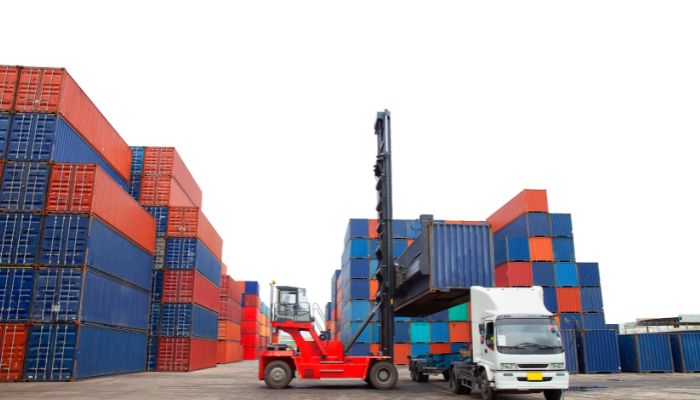
Kapiri Mposhi is an administrative centre and an important transportation hub for cargoes passing through the capital Lusaka and the southern part of Zambia. The dry Port lies on the Great North Road and covers 4 hectares of land. It has a gantry crane for lifting 36 million tonnes of cargo, warehousing facilities for storing general freight and breakbulk, modern equipment for handling containerised cargo and two heavy-duty weighbridges for port trucks. Container and de-stuffing services are offered here, along with handling rail freight.
3. Mulambwa Harbour
The Mulambwa harbour lies on the Zambezi river and handles cargo destined for Kalabo, a district in the western province of Zambia. Commodities like seafood, milk and miscellaneous goods pass through this harbour, coming from the Barotse plain or the Zambezi floodplain, one of the most significant wetlands of Africa. It is the second busiest Port in Zambia, accommodating small fishing vessels and river barges.
A crucial maritime gateway is the Mongu-Kalabo water canal which originates from the Mulambwa harbour and is managed by the Ministry of Transport. An official border crossing has been established in the district of Sikongo, which could enable increased trade between Zambia and Angola. The Mulambwa harbour would also reap the benefits of the Kalabo-Luanginga canal waterway.
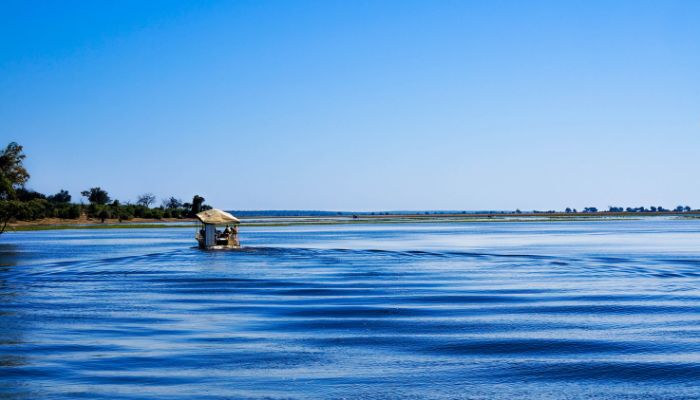
However, the Port faces problems regarding connectivity due to the absence of all-weather roads. The 35-kilometre-long Mongo-Kalaboall highway is a significant transportation project to solve this issue. It is being constructed to connect Mulambwa harbour with the Kalabo district, going all the way to Sikongo. It is envisaged to boost interregional trade among Zambia, Angola and other neighbours.
It is Zambia’s most complex and extended embankment transportation project after the Tuta bridge construction on the Luapula river in the Central Province. Presently, a pontoon at Liyelelo harbour serves the eastern and western banks of river Zambezi as the Matongo pontoon is not operational.
4. Port of Nchelenge
The town of Nchelenge lies in the Luapula province on the southeastern coast of Mweru Lake. It is adjacent to the city of Kashikishi in northern Zambia. Ferries operate from the Port of Nchelenge to the lake’s two small islands, namely Kilwa and Isoke, homes of local fishing and agricultural communities. Nchelenge also serves as the administrative seat, while Kashikishi is a bustling market and a regional fisheries hub.
In 2002, a vast barge was brought to the Lake to transport trucks filled with copper ore mined from the Dikulushi region of Congo. Destined for Namibia, these concentrated ores were ferried across Lake Mweru via Nchelenge. The main highway of the Central Provinces passes through Nchelenge, linking the town with Mansa in the south.
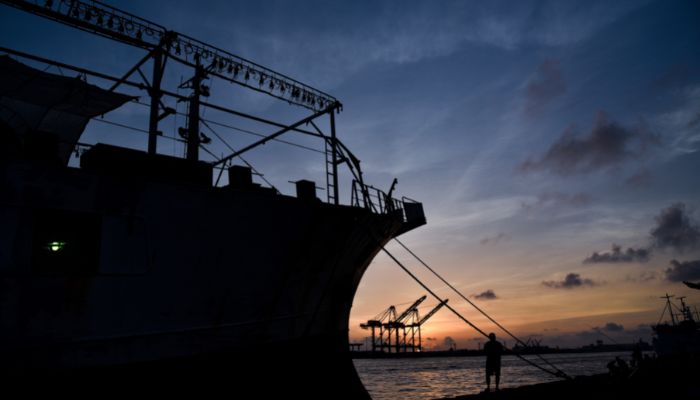
The Port is a famous tourist destination providing affordable accommodation in the Mweru Transport Guesthouse overlooking the harbour. A few local cafes have opened near the resthouse offering traditional dishes like Nshima and smoked fish.
The district council operates another guesthouse on the opposite side of the harbour. Fishing and recreational boating facilities are available for tourists; however, it is not completely safe since the lake sustains many crocodiles. It is a perfect place for nature lovers as one can expect to spot many exotic bird species by following the track leading to the swampy area, a few miles from the harbour.
5. Siavonga harbour
The town of Siavonga lies on the northern shores of Lake Kariba and is a popular resort also known as the Riviera of Zambia, just an hour’s drive from the capital Lusaka. The Port is popular among the rich Business community developing lavish hotels and holiday and weekend getaways in the region.
A famous resort overlooking the lake and the hills of Zimbabwe is the Kariba Inn. Tourists can enjoy various water sports like boating and fishing. The four-star hotel also rents a traditional houseboat for overnight trips and organises birdwatching tours.
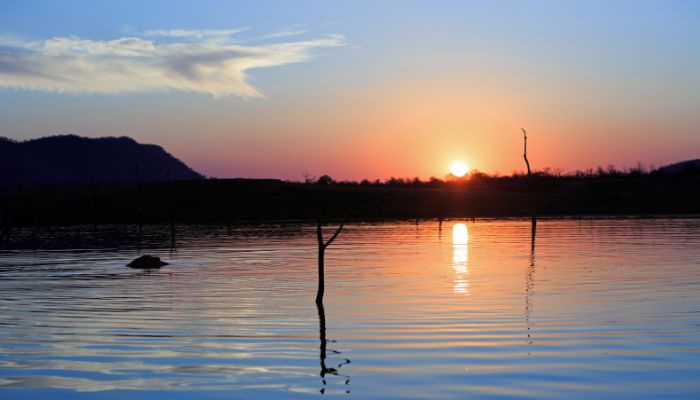
Lake Kariba spans more than 5000 kilometres and is 100 m deep. It is the most extensive artificial reservoir in the world, holding over 190 billion tonnes of water. A 130 m high dam wall was constructed in 1959 to hold back water and generate electricity. Two power stations on the Zambezi river’s northern bank produce over 1300 megawatts. Hence the waterbody is a crucial resource for Zambia and is adjacent to the border of Zimbabwe.
6. Zambian Dry Port in Walvis Bay
The dry Port of Zambia on Walvis Bay was opened in 2017 and covered 28,000 square metres. The 3 million dollar project was built in phases, with the first phase completed in 2010 and the second in 2018. It functions as a distribution hub and a logistics centre serving Zambia and other SADC countries. It offers customs clearance and bagging services as well.
The Port has 72 reefer connections for handling frozen cargoes, including seafood, meat and fruits. It also takes building materials, mining commodities like marble stone, metal ore concentrates, processed ores, granite, chemicals, agro-based products, metals, beverages, machinery and vehicles. The Port has four warehouses and an open yard for storing cargo.
The authorities plan to expand and refurbish the Port by installing an 800-litre tank for storing diesel. A terminal building will be constructed, and an additional warehouse covering 3000 m2 will store breakbulk like copper, zinc, lead and sulphur.
7. Samfya Port
Samfya port lies on the banks of Bangweulu Lake in the Luapula province. The lake fisheries are one of the biggest in the country, and the major catch consists of bream, yellow belly, tiger fish and catfish. Fishermen communities have settled along the lake in large numbers, which has resulted in overexploitation in the past few years.
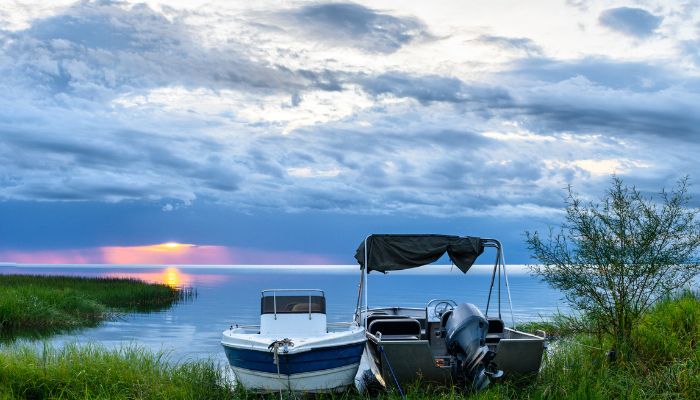
Though 58,000 tonnes of fish are procured from the lake annually, its marine ecosystem has been put under tremendous pressure due to the development of the neighbouring area as a holiday destination lined with beach huts and small resorts. Tourists can enjoy sunbathing on the beach or walk down the harbour to the nearby Chilubi island, situated 100 kilometres from the port.
You might also like to read-
- Port Of Hong Kong – The World’s Largest Container Port
- The Port Of Singapore : One Of The Busiest Ports In The World
- 2 Major Ports of Togo
- The Port of Rotterdam – The Biggest Port of Europe
Disclaimer :
The information contained in this website is for general information purposes only. While we endeavour to keep the information up to date and correct, we make no representations or warranties of any kind, express or implied, about the completeness, accuracy, reliability, suitability or availability with respect to the website or the information, products, services, or related graphics contained on the website for any purpose. Any reliance you place on such information is therefore strictly at your own risk.
In no event will we be liable for any loss or damage including without limitation, indirect or consequential loss or damage, or any loss or damage whatsoever arising from loss of data or profits arising out of, or in connection with, the use of this website.
Do you have info to share with us ? Suggest a correction
Disclaimer :
The information contained in this website is for general information purposes only. While we endeavour to keep the information up to date and correct, we make no representations or warranties of any kind, express or implied, about the completeness, accuracy, reliability, suitability or availability with respect to the website or the information, products, services, or related graphics contained on the website for any purpose. Any reliance you place on such information is therefore strictly at your own risk.
In no event will we be liable for any loss or damage including without limitation, indirect or consequential loss or damage, or any loss or damage whatsoever arising from loss of data or profits arising out of, or in connection with, the use of this website.

About Author
Zahra is an alumna of Miranda House, University of Delhi. She is an avid writer, possessing immaculate research and editing skills. Author of several academic papers, she has also worked as a freelance writer, producing many technical, creative and marketing pieces. A true aesthete at heart, she loves books a little more than anything else.
Latest Maritime Knowledge Articles You Would Like:
Subscribe To Our Newsletters
By subscribing, you agree to our Privacy Policy and may receive occasional deal communications; you can unsubscribe anytime.















